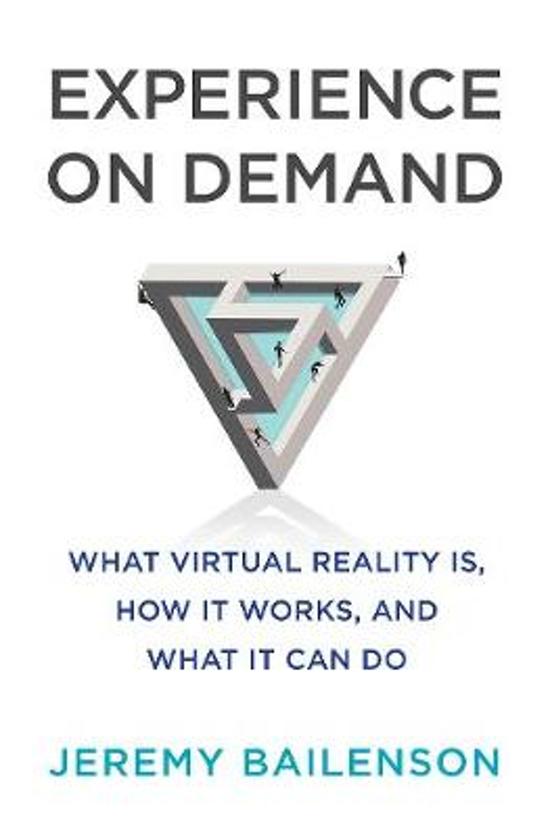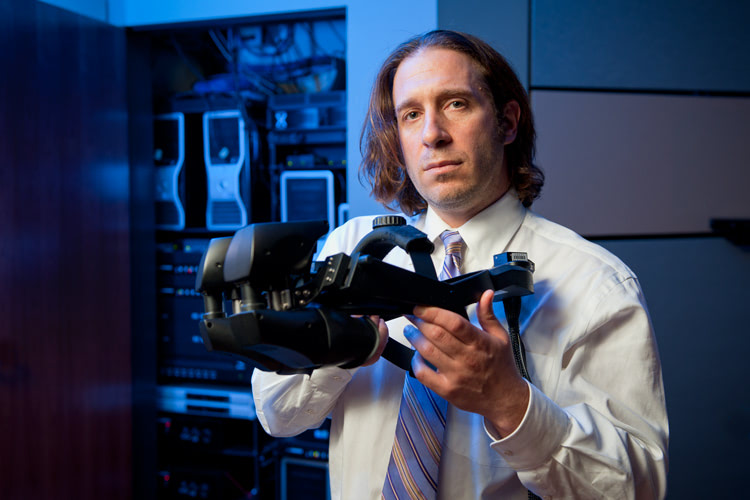Virtual reality has come a long way. Like most technological leaps, it’s had a huge push from the entertainment industry, but current applications span a wide range of social and academic fields. Jeremy Bailenson, founding director of Stanford University’s Virtual Human Interaction Lab, has just released his new book, Experience on Demand. We briefly spoke with him about some of the most game-changing applications of this fascinating medium - as well as the risks.
"For twenty years I’ve been running experiments on people to see how the mind responds"
The subtitle of your book Experience on Demand is about what virtual reality can do – do to us or for us?
The subtitle says it all: “What Virtual Reality Is, How It Works, and What It Can Do”. My PhD is in psychology, and what I study is how technology affects the mind. For twenty years I’ve been running experiments on people to see how the mind responds and, more recently, building applications that leverage that which makes virtual reality such a special medium.
What is it that makes it so special?
It’s hard to talk about virtual reality; you have to do it. When it’s done well, it’s complete mental transportation. You’ve gone somewhere else, and it’s consuming and it’s spectacular and it’s a different type of experience. The second I tried it, and really thought about if this is what I could do for a living twenty years ago, I went all in.
Think about virtual reality as an experience. You’re not doing a media activity; the brain tends to treat it in a similar way as an actual experience. You’ve got this magic machine that creates these experiences as if you were to go outside and actually do something, so it’s pretty spectacular to think we can artificially reproduce any experience imaginable.
You remain an optimist about the technology?
The book has now been reviewed by The New York Times, Nature, The Washington Post and The Wall Street Journal. The critics feel I need to be more doom-and-gloom and should hate Silicon Valley a bit more. And I do hear that critique, but it’s my true hope that I can, in some small way, shape what people do and how they think about the medium to ensure a more positive outcome.
My job is to ensure that the good use cases emerge and not the gratuitous ones. When Stanford students come into my office with an idea—they’ve all got start-up ideas, because we’re in Silicon Valley—probably nineteen out of twenty times, we decide it’s better to use another medium than virtual reality. So, I’m an extremely cautious advocate.
"My job is to ensure that the good use cases of VR emerge and not the gratuitous ones"
What are some of those good use cases?
We do a lot of work on climate change. Can you imagine, not in your head, but to viscerally experience what your city is going to look like when flooding and droughts and more extreme storms happen? We do work on reducing prejudice, so imagine walking a mile in someone else’s shoes – literally. You look down and you become a different skin color or become a different gender, and you experience prejudice first hand.
We do lots of work where you can do the impossible, where you can create experiences that the brain treats as real but are very difficult to achieve in the real world. We then ask: how can you use that to change the way people behave, or the way they conserve resources, or the way they treat other people?
And what about the risks?
Despite the critiques of the media, Chapter 2 is all about the downsides. Things like becoming addicted to these experiences that are always perfect, or becoming a little simulator-sick or nauseous because you’ve been in there for too long, or most poignantly, walking into walls or stepping on cats. We had a first death unfortunately in virtual reality: a man in Moscow was so distracted he fell through a plate-glass table and he bled to death. So there are real risks.
How can we circumvent those risks?
That is the critical question, and I’ll talk about when I come and deliver this address.
You’ve been studying VR since the late ‘90s. How has it evolved and where are we now?
When I first started doing research, we thought of virtual reality as being similar to an MRI machine: very expensive, takes up a whole room and you need to have a dedicated engineer to run it. A bit later, if you look at my lab webpage and if you look at our scientific journal articles, probably three-quarters of them were using a pair of goggles that cost more than an automobile. Currently, the goggles cost as much as a fancy dinner at a restaurant. So, we’ve gone through an epic change of price.
Also, because of the big tech companies, we’ve got a lot of availability. Conservatively, in the United States, there are over ten million VR systems floating around. From a citizen’s standpoint, I want to understand the good and bad use cases, but as a scientist, it’s great. I can now run experiments where we’ve got larger sample sizes and field studies where people are now using them in their homes. This has transformed the way we think about studying the medium.
"The really great use cases of VR aren’t just games, it’s for creating life experiences that improve us"
To conclude, what do you wish that everyone knew about VR that they may not know?
I’m always stunned that people don’t know that the epic wins are really not about games or entertainment. They’re about making yourself better, whether that’s training or evaluating yourself and others. The really great use cases aren’t just games, it’s for creating life experiences that improve us.
 Bailenson's book "Experience on Demand: What Virtual Reality Is, How It Works, and What It Can Do" is out now.
Bailenson's book "Experience on Demand: What Virtual Reality Is, How It Works, and What It Can Do" is out now.
Jeremy Bailenson will be speaking at the John Adams Institute on April 24, 2018, 6:00 pm – 7:30 pm, at Pakhuis de Zwijger in Amsterdam.
Cover photo: L.A. Cicero via Stanford News

Share your thoughts and join the technology debate!
Be the first to comment